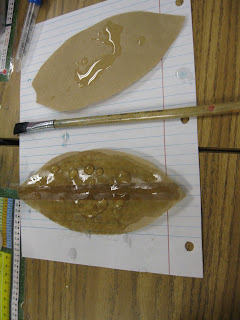Yes, that about explains my state of mind these days!
I have neglected my little blog as I've been trying to keep the most important the most important. Managing my time has become a challenge these days but I have a few moments this weekend and thought I'd share what my kids have been up to in our classroom.
We have been studying animals and their adaptations. We have new awesome science books as a great resource for our learning but still nothing beats some hands on investigations.
The first one we did was to investigate how an animal's blubber or fat layer helps it to survive in a cold climate. We read a bit about the polar bear to build some background and then we got to it.
I premade some blubber gloves by taking a quart sized baggie and put vegetable shortening in it. I put another quart sized baggie inside that one and overlapped the two bag openings and taped it closed so the shortening could not get out. I made four of these since my class is divided into four table teams.
The experiment involves students placing their hand inside a plain ziplock quart bag and then dipping their hand inside a bucket of ice water. They make observations about how cold their hand becomes. Because we are also working on reading thermometers and temperatures my students place a thermometer inside the bag as well. They took a temperature reading when they pulled their hands out.
Then we followed the same procedure but this time with the blubber glove. There is a big difference in how cold their hands get and in the actual temperature reading.
Like all good scientists, students were required to record observations in pictures and in words.
They recorded the temperature reading by drawing it on the picture of the thermometer.
Love the diagraming and labeling this student did!!
Another animal adaptation experiment we did was to find out why ducks preen their feathers.
Beforehand, we watched a short video clip that showed a duck in his pond environment and we got to observe some of his behaviors. We saw him preening his feathers. I read a short book to the students that told how ducks have an oil gland that they used when they preen.
We then worked on finding out for ourselves why this would be helpful to a duck.
I precut feather shapes out of brown lunch bags. Students worked with partners so they could have conversations along the way. They painted one feather with vegetable oil and the other feather remained dry. They then used medicine droppers to drop water onto each feather.
It was cool to see how the water beaded up on the oiled feather. If you tilt the feather the oil runs right off. The water on the nonoiled feather spread and soaked in after a bit.
This was an important discovery.
We then used our beakers to see how water and oil react.
Here a student is observing how the oil rises to the top.
Again, a big part of the scientific process is making good, clear observations.

We shook the water and oil really hard and then left them out. Sure enough, the oil managed to find its way back to the top.
I've posted these experiments and two others onto my TPT page.
Click the link below if interested.
Happy Investigations!














 youngdor8@gmail.com
youngdor8@gmail.com



















